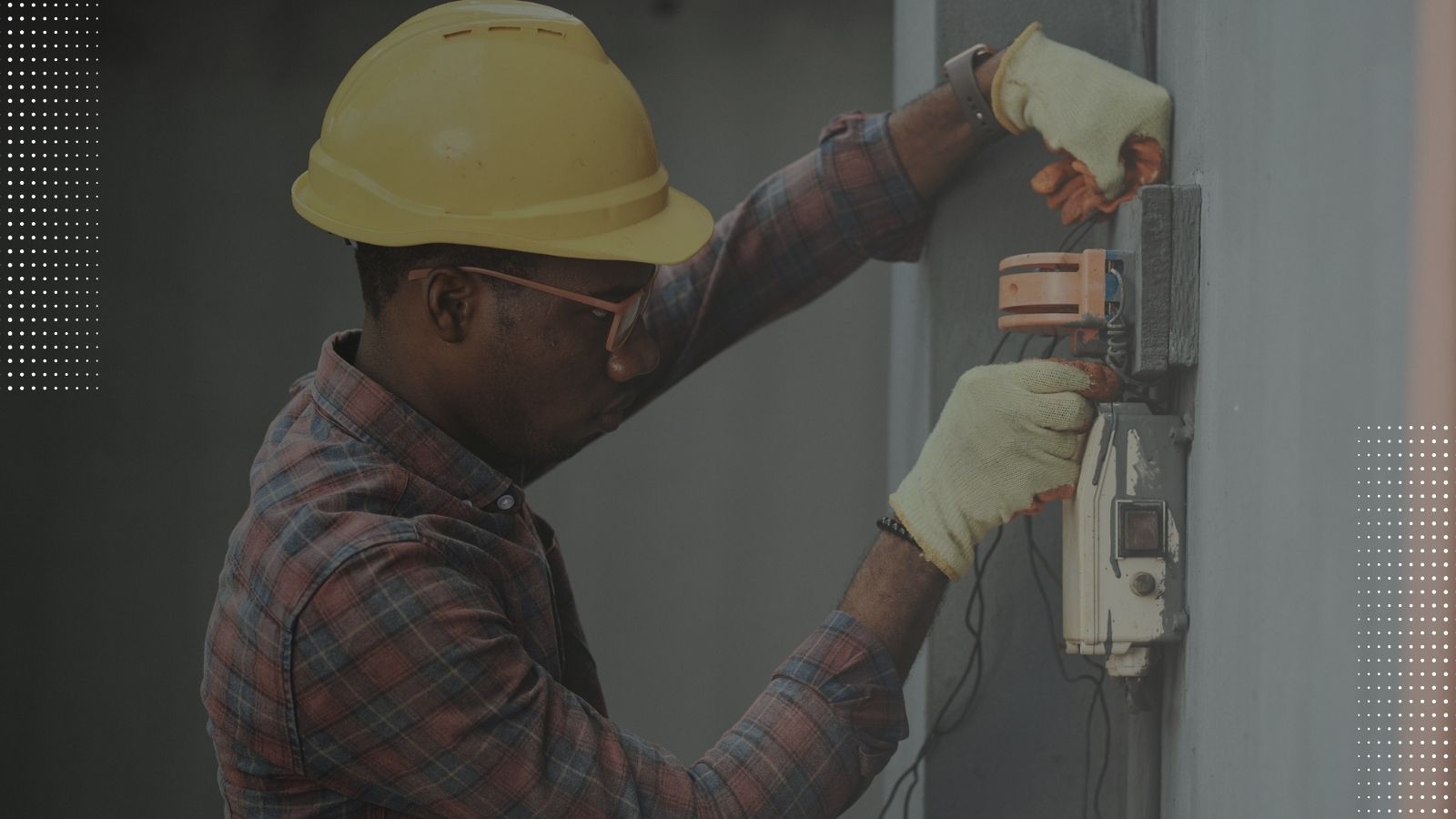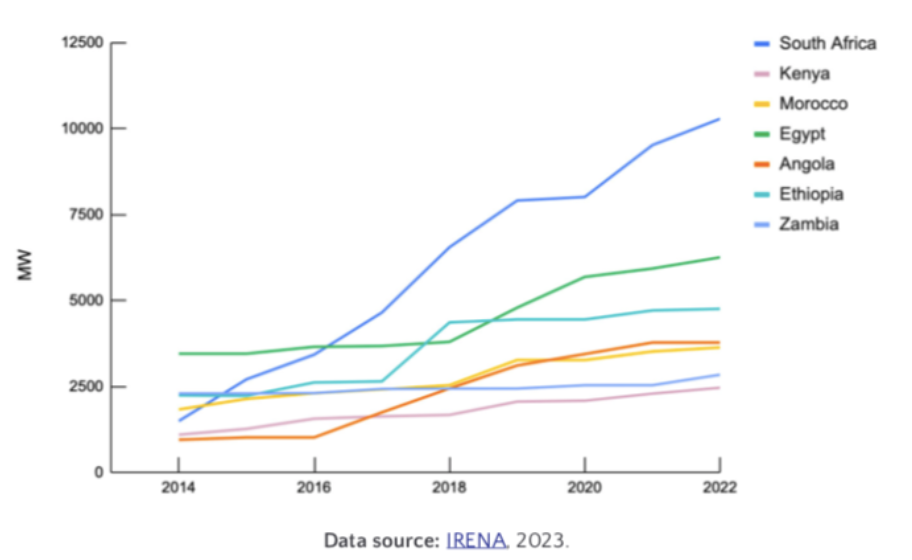With more potential than anywhere else on earth, Africa is a renewable energy (RE) superpower in the making. The continent is home to 40% of the world’s RE potential and is home to 60% of the world’s best solar resources.
Access to financing is a perennial issue, but great strides have already been made. RE capacity has more than doubled over the last 10 years, from 28 GW to 59 GW, while on average solar capacity almost doubled every year between 2011 and 2021. With an estimated solar potential of 7,900 GW, the sky’s the limit. Leading the way are South Africa (5.3 GW), Morocco (2 GW) and Egypt (1.3 GW), with two thirds of the continent’s installed capacity between them.
Renewable energy capacity for selected African countries
Wind is also picking up. Including installed wind farms, and those being built and commissioned this year, capacity should top 9 GW. Again South Africa, Morocco and Egypt lead the way. And this is just the beginning – planned wind projects total a further 86 GW. This includes a number of projects in Egypt, including a 10 GW farm in the Gulf of Suez that will be one of the world’s largest. This is part of a wider plan for renewables to account for 42% of the country’s energy mix by 2030.
Case study: Namibia sees the lightNamibia has traditionally imported most of its electricity from South Africa, but has recently turned to domestic solar generation as a way to protect itself against expensive and unreliable imports. By introducing auctions for independent projects, state utility Nampower has successfully attracted private investment. The results have been spectacular – the share of solar in the country’s energy mix has increased from 2% in 2015 to 27% in 2019, the fourth fastest growth rate in the world. |
Underpinning this growth has been a massive uplift in investment. Average annual investment in renewables between 2010 and 2020 was $5bn compared to just $500m the previous decade, growing at more than 10 times the global rate. Solar and wind have been the primary beneficiaries, accounting for almost 90% of all RE investment. Unsurprisingly South Africa ($23bn), Morocco ($9.4bn), Egypt ($7.1bn) took the lion’s share, with Kenya close behind with $6.7bn.
Case study: South Africans take controlIn response to state utility Eskom’s mismanagement of the power sector that has led to widespread and regular blackouts, South Africans imported more than 5 GW of solar panels worth $1.1bn from China between March 2022 and August 2023, enough to meet 3% of the country’s annual energy demand. This makes South Africa the fastest growing importer of Chinese solar panels in the world. Eskom estimates the combined capacity of these panels at 4,841 MW, a fivefold increase in solar rooftop generation in a year and equivalent to the maximum capacity of the country’s largest coal plant. |
Despite this growth, a great deal more investment is needed. The International Energy Agency (IEA) and African Development Bank Group (AfDB) estimate that $200bn a year is needed for the continent to hit its climate goals. However, this amounts to just 4% of annual investment in the global energy transition needed to limit warming to 1.5C. Much of this funding will need to be spread further – between 2010 and 2020, 90% of investment went to just 14 out of 55 countries, with South Africa, Morocco, Egypt and Kenya accounting for three quarters of all funding.






